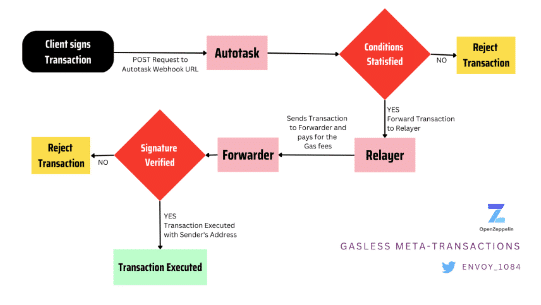Meta-Transactions

Blockchain has already revolutionized the way we think about trust, security, and transparency across many industries. However, there is still one major hurdle to overcome: user adoption. Indeed, the complexity of using blockchain-based applications can be a significant barrier to entry.
One solution to this problem is meta-transactions, which are becoming increasingly popular in the blockchain space.
What are meta-transactions?
Taking the Ethereum blockchain as an example, making a transaction requires paying a gas fee that is a fraction of the Ether (ETH) token.
Meta-transactions are a way for users to interact with blockchain-based applications with only a public/private key pair without having to directly pay the gas fees themselves.
How do meta-transactions work?
Instead of signing and executing a transaction directly on the blockchain, which would cost gas fees, the user can sign and transmit a message containing the information about the transaction they want to execute to a relay server. Then, this relay will send (by paying the gas fees in place of the user) the user’s transaction to a smart contract that will execute that transaction.
To put this into practice, OpenZeppelin Defender, for example, offers a free and open source offering for setting up meta-transactions.
Finally, meta-transactions have several advantages over traditional blockchain transactions. First, they allow users to interact more easily with decentralized applications without having to worry about the technical details of how the blockchain works. Furthermore, meta-transactions can help lower the barrier to entry for new users, since they do not have to hold the native cryptocurrency of the blockchain in question (ETH for the Ethereum blockchain) or understand how gas fees work to use a blockchain-based application.
By emphasizing the simplicity and user-friendliness of the user experience, meta-transactions are therefore a solution to accelerate the adoption of blockchain by users.
Other news